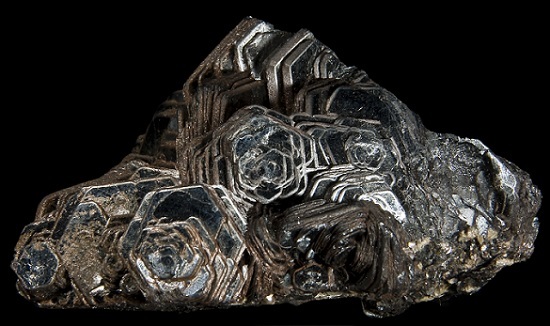For years, scientists have been striving to find an effective method of splitting water for the purpose of mining the electron rich hydrogen to use for clean energy. Water splitting is where h2o undergoes an artificial photosynthesis which splits the water molecules into their components hydrogen and oxygen. The solar-energy-filled hydrogen extracted from this process can then be used as an efficient energy source. The only complication that this method poses is that the act of splitting water is a very strenuous task that quickly destroys many of the materials tested. Researchers have been searching tirelessly for a substance that not only stands up to the test, but is plentiful and easily extractable in our world as to not set humanity up with another highly exhaustible energy source. This is where hematite comes into the picture.

Hematite, it is one of the most abundant minerals in the world and has been used by humans for thousands of years as it is the best source of iron ore on Earth. The name ‘hematite’ comes from the Latin word word for ‘blood stone’ due to the fact that raw hematite is often covered in iron oxide or rust. In addition to its iron abundance, hematite is also used to produce pigments, ballast, radiation shielding, and many other products. It also holds a significant place in spiritual healing, said to have the ability to ground and stabilize its beholder for protection.
Scientists have been aware for some time that hematite could work for water splitting, but it was destroyed too quickly in the process and thus would likely diminish the world of its hematite deposits if we were to begin consuming it for energy. So, how is it that the researchers at Boston College have managed to split water using hematite with little to no degradation?
Published in, Nature Communications the researchers found that using a ‘re-growth’ treatment on hematite where an acidic solution is applied to the material under intense heat which simultaneously files down ridges and fills in depressions, they could make the hematite much smoother and more durable. This refined hematite can then be paired with amorphous silicon, which is derived from sand, to achieve artificial photosynthesis in order to capture and store solar energy within the hydrogen gas. Considering the abundance and low-cost extraction of hematite and sand in the world, this discovery may likely revolutionize the way we produce our energy.

Scanning electron micrographs image of (a) sdH, (b) rgH I, (c) rgH II and (d) rgH III; scale bars, 100 nm. Magnified views of selected areas in the main frames are presented in the insets. Transmission electron micrographs of focused ion beam prepared cross-sectional samples of (e) sdH, (f) rgH I, (g) rgH II and (h) rgH III, scale bars, 500 nm.

(a) Schematics of overall unassisted water splitting by haematite photoanode (right) and amorphous Si photocathode (left) in a tandem configuration. (b) Net photocurrent during the first 10 h of operation using NiFeOx-modified rgH II with TiO2/Pt-loaded amorphous silicon photocathode in 0.5 M phosphate solution (pH 11.8) in a two-electrode, tandem configuration (no external bias).
“It is a delight to see that a simple re-growth treatment can do so much to improve the performance of hematite,” said Wang. “Due to its prior poor performance, hematite has been pronounced ‘dead’ by many leading researchers in the field. We are happy to show that much can be harvested from this earth abundant, non-toxic material.”
After a success with the hematite, the team is now interested in seeing how other minerals are affected by the ‘re-growth’ process for further breakthroughs in artificial photosynthesis. Perhaps more of the common resources of this planet have an untapped potential waiting to be uncovered. The team’s main priority now is to make the necessary modifications in order to get the new hematite-silicon method prepared for large-scale utilization.
References
Jang, J., C. Du, Y. Ye, Y. Lin, X. Yao, J. Thorne, E. Liu, G. McMahon, J. Zhu, A. Javey, J. Guo, and D. Wang. “Enabling Unassisted Solar Water Splitting by Iron Oxide and Silicon.” Nature.com. Nature Publishing Group, n.d. Web. 15 Sept. 2015.
Boston College. “Hematite ‘re-growth’ smoothes rough edges for clean energy harvest: First ‘unassisted’ water splitting using only hematite and silicon as solar absorbers.” ScienceDaily. ScienceDaily, 16 June 2015.
Hayward, Ed. “Water-Splitting Project May Boost Clean Power Research.” BC.edu. The Boston Chronicle, n.d. Web. 15 Sept. 2015.
“Hematite: A Primary Ore of Iron and a Pigment Mineral.” Geology. N.p., n.d. Web. 15 Sept. 2015.
Thanks to Time Wheel for this article.

